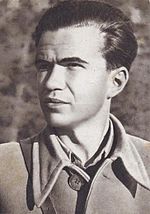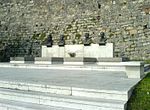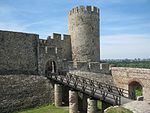Damat Ali-Paša's Turbeh
Buildings and structures in BelgradeIslamic architecture

Damat Ali-Paša's Turbeh is an Ottoman mausoleum erected in 1784 in Belgrade, Serbia. It held the body of the vizier Silahdar Damat Ali Pasha. The building is situated in the Upper Town of the Belgrade Fortress. Along with Sheik Mustafa's Tomb, this monument represents one of the only remaining examples of Islamic funerary architecture in Belgrade.
Excerpt from the Wikipedia article Damat Ali-Paša's Turbeh (License: CC BY-SA 3.0, Authors, Images).Damat Ali-Paša's Turbeh
Great Staircase, Belgrade Old Town (Stari Grad Urban Municipality)
Geographical coordinates (GPS) Address External links Nearby Places Show on map
Geographical coordinates (GPS)
| Latitude | Longitude |
|---|---|
| N 44.823333333333 ° | E 20.449722222222 ° |
Address
Дамад Али-пашино турбе (Дамат Али-пашино турбе)
Great Staircase
11000 Belgrade, Old Town (Stari Grad Urban Municipality)
Central Serbia, Serbia
Open on Google Maps











